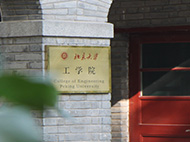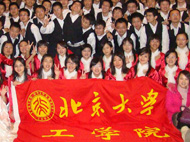新葡萄8883国际官网应用物理与技术研究中心
高能量密度物理数值模拟教育部重点实验室
|
Computational Quantum Mechanics in Phase Space |
邵嗣烘 副教授(新葡萄8883国际官网数学学院)
时 间:2021年10月21日(周四)中午11:45
地 点:新葡萄8883国际官网1号楼210会议室
报告内容摘要:
The Wigner function has provided an equivalent and convenient way to render quantum mechanics in phase space. It allows one to express macroscopically measurable quantities, such as currents and heat fluxes, in statistical forms as usually does in classical statistical mechanics, thereby facilitating its applications in nanoelectronics, quantum optics and etc. Distinct from the Schrödinger equation, the most appealing feature of the Wigner equation, which governs the dynamics of the Wigner function, is that it shares many analogies to the classical mechanism and simply reduces to the classical counterpart when the reduced Planck constant vanishes. Despite the theoretical advantages, numerical resolutions for the Wigner equation is notoriously difficult and remains one of the most challenging problems in computational physics, mainly because of the high dimensionality and nonlocal pseudo-differential operator. On one hand, the commonly used finite difference methods fail to capture the highly oscillatory structure accurately. On the other hand, all existing stochastic algorithms, including the affinity-based Wigner Monte Carlo and signed particle Wigner Monte Carlo methods, have been confined to 2D phase space. Few results have been reported for higher dimensional simulations. My group has made substantial progress in both aspects. We presented a first attempt to obtain a deterministic method to solve the Wigner equation in 4-D phase space by exploiting its intriguing mathematical structure, and succeeded to detail the quantum dynamics of a Helium-like system and the quantum interference fringes in the double-slit experiment. Our algorithm combines an efficient conservative semi-Lagrangian scheme in the temporal-spatial space with an accurate spectral element method in the momentum space. On the other hand, we built the bridge between the Wigner equation and a stochastic particle method in a rigorous manner and proposed a SPA (Stationary Phase Approximation) + SPADE (Sequential-clustering Particle Annihilation via Discrepancy Estimation) strategy to overcome the sign problem where the curse of dimensionality which causes the unattainable exponential wall is translated into the NP-hard problems that may have approximate solutions. The performance of 6-D simulations demonstrates the accuracy and the efficiency of our stochastic particle methods.
报告人简历:
邵嗣烘,新葡萄8883国际官网数学科学学院副教授,毕业于新葡萄8883国际官网数学科学学院并获得理学学士和博士学位,先后到访过北卡罗莱那大学夏洛特分校,香港科技大学,普林斯顿大学、塞维利亚大学和香港中文大学等。主要面向智能、量子和计算的交叉融合开展高维问题和NPC问题的数值方法研究,落脚点在基础的数学理论和高效的算法设计,具体研究领域包括:高维问题的数值方法、计算量子力学、图(网络)的谱理论及其算法、微分方程数值解和脑科学等,得到国家自然科学基金青年,面上和优青连续资助。2019年入选北京智源人工智能研究院“智源青年科学家”。2021年获新葡萄8883国际官网黄廷芳/信和青年杰出学者奖。曾获中国计算数学学会优秀青年论文一等奖,新葡萄8883国际官网学术类创新奖,新葡萄8883国际官网优秀博士学位论文三等奖,宝洁教师奖和新葡萄8883国际官网优秀班主任等。
欢迎各位老师参加交流与讨论
联系人:
——————————————————————
甘秋妹
Qiumei Gan
新葡萄8883国际官网应用物理与技术研究中心办公室
Center for Applied Physics and Technology,Peking University
新葡萄8883国际官网1号楼402
Room402,1 Building,College of Engineering ,PKU









